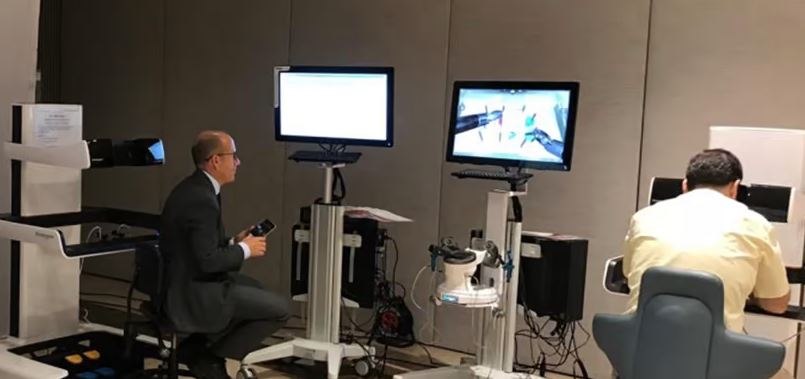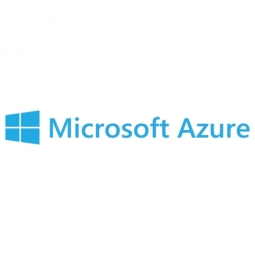Customer Company Size
Mid-size Company
Region
- America
Country
- United States
Product
- Power BI
Tech Stack
- Data Visualization
- Dashboard Development
Implementation Scale
- Enterprise-wide Deployment
Impact Metrics
- Productivity Improvements
- Customer Satisfaction
- Digital Expertise
Technology Category
- Application Infrastructure & Middleware - Data Visualization
- Functional Applications - Remote Monitoring & Control Systems
Applicable Industries
- Education
Applicable Functions
- Business Operation
- Quality Assurance
Services
- Data Science Services
- System Integration
About The Customer
Jacksonville University, a premier private institution located in northeast Florida, has been recognized as one of 'America’s Best Colleges' in the south for over a decade by U.S. News & World Report. The university is committed to providing high-quality education and fostering a data-driven culture to enhance student engagement and institutional management. With a medium-sized organization of 50 to 999 employees, Jacksonville University serves a diverse student body and offers a wide range of academic programs. The institution is dedicated to leveraging data and analytics to improve decision-making processes and drive positive outcomes for students and faculty. By partnering with Trivium BI, Jacksonville University aims to transform its data access and utilization, enabling faster and more informed decision-making across the campus. The university's leadership, including President Tim Cost, is focused on creating a proactive and rich data culture that empowers faculty, staff, and students to make meaningful decisions based on objective data insights. Through the implementation of Power BI and the development of intuitive dashboards, Jacksonville University is committed to democratizing data access and fostering a culture of transparency and collaboration.
The Challenge
Five years ago, Jacksonville University (JU) faced significant challenges in accessing and utilizing data effectively. The process was cumbersome, requiring leadership to fill out forms and wait for the analytics department to provide static reports. This reactive approach hindered timely decision-making and limited the ability to leverage data for strategic purposes. The arrival of President Tim Cost in 2013, with his extensive experience in Fortune 500 companies, brought a new expectation for technology and data accessibility. The need for a more dynamic and proactive data culture became evident, prompting JU to seek a solution that would democratize data access and empower leaders, faculty, and staff to make informed decisions. The existing data processes were siloed, with different departments owning separate data sets, leading to inconsistencies and inefficiencies. Meetings with deans often resulted in conflicting data interpretations, as each department relied on its own data sources. This lack of a unified and authoritative data set hindered meaningful discussions and strategic planning. The challenge was to create a centralized and accessible data platform that would streamline data access, improve data accuracy, and foster a culture of data-driven decision-making across the university.
The Solution
To address the challenges of data access and utilization, Jacksonville University partnered with Trivium BI to implement Power BI as a comprehensive data visualization and analytics solution. The collaboration began in 2019, with the goal of democratizing data access across the campus and creating a proactive data culture. The Institutional Research (IR) team, along with Dr. Resche Hines and Dr. Angela Henderson from Trivium BI, spearheaded the initiative to build numerous dashboards on various data sets. These dashboards were then integrated into a JU app, allowing leadership to access dynamic and relevant data directly from their devices. The implementation of Power BI enabled the university to streamline data access and improve data accuracy. The intuitive nature of Power BI allowed faculty, staff, and leadership to easily navigate the dashboards and access the information they needed. The IR team played a crucial role in embedding the dashboards into the app, ensuring that leadership could quickly and easily access multiple pre-filtered data sets. This approach eliminated the need for individual Power BI links and simplified data access for leadership. The solution also involved breaking down data silos and creating a centralized and authoritative data set. By leveraging Power BI, Jacksonville University was able to provide a unified view of data, enabling more meaningful discussions and strategic planning. The implementation of Power BI not only improved data access but also fostered a culture of data-driven decision-making, empowering faculty, staff, and students to make informed decisions based on objective data insights.
Operational Impact
Quantitative Benefit

Case Study missing?
Start adding your own!
Register with your work email and create a new case study profile for your business.
Related Case Studies.

Case Study
Revolutionizing Medical Training in India: GSL Smart Lab and the LAP Mentor
The GSL SMART Lab, a collective effort of the GSL College of Medicine and the GSL College of Nursing and Health Science, was facing a challenge in providing superior training to healthcare professionals. As clinical medicine was becoming more focused on patient safety and quality of care, the need for medical simulation to bridge the educational gap between the classroom and the clinical environment was becoming increasingly apparent. Dr. Sandeep Ganni, the director of the GSL SMART Lab, envisioned a world-class surgical and medical training center where physicians and healthcare professionals could learn skills through simulation training. He was looking for different simulators for different specialties to provide both basic and advanced simulation training. For laparoscopic surgery, he was interested in a high fidelity simulator that could provide basic surgical and suturing skills training for international accreditation as well as specific hands-on training in complex laparoscopic procedures for practicing physicians in India.

Case Study
IoT platform Enables Safety Solutions for U.S. School Districts
Designed to alert drivers when schoolchildren are present, especially in low-visibility conditions, school-zone flasher signals are typically updated manually at each school. The switching is based on the school calendar and manually changed when an unexpected early dismissal occurs, as in the case of a weather-event altering the normal schedule. The process to reprogram the flashers requires a significant effort by school district personnel to implement due to the large number of warning flashers installed across an entire school district.

Case Study
Implementing Robotic Surgery Training Simulator for Enhanced Surgical Proficiency
Fundacio Puigvert, a leading European medical center specializing in Urology, Nephrology, and Andrology, faced a significant challenge in training its surgical residents. The institution recognized the need for a more standardized and comprehensive training curriculum, particularly in the area of robotic surgery. The challenge was underscored by two independent studies showing that less than 5% of residents in Italian and German residency programs could perform major or complex procedures by the end of their residency. The institution sought to establish a virtual reality simulation lab that would include endourological, laparoscopic, and robotic platforms. However, they needed a simulator that could replicate both the hardware and software of the robotic Da Vinci console used in the operating room, without being connected to the actual physical console. They also required a system that could provide both basic and advanced simulation training, and a metrics system to assess the proficiency of the trainees before they performed surgical procedures in the operating theater.

Case Study
Edinburgh Napier University streamlines long-distance learning with Cisco WebEX
• Geographically dispersed campus made in-person meetings costly and inconvenient.• Distance-learning programs in Malaysia, India, and China required dependable, user-friendly online tools to maximize interaction in collaborative workspaces.• Virtual learning environment required a separate sign-in process, resulting in a significant administrative burden for IT staff and limited adoption of collaboration technology.

Case Study
8x increased productivity with VKS
Before VKS, a teacher would spend a lot of time showing a group of 22 students how to build a set of stairs within a semester of 120 hours. Along with not leaving the teacher much time to provide one-on-one support for each student to properly learn carpentry, it also left a considerable amount of room for error. Key information would be misinterpreted or lost as the class was taught in the typical show-and-tell way.

Case Study
Scalable IoT Empowering GreenFlex's Sustainable Growth
GreenFlex, a company that supports sustainable development, decarbonization, and energy efficiency, faced several challenges in its quest to expand its business. The company needed to deploy a robust and sustainable IoT technology to support its growth. It was crucial for them to monitor and control devices at customer sites in a safe and reliable manner. They also needed to integrate devices across a range of communication protocols and gather and act on data to meet efficiency targets. GreenFlex had previously built IoT capabilities into its digital platform, GreenFlexIQ, to monitor and manage customer sites remotely. However, they soon realized that they needed a new platform to support their ambitions. They needed a platform that could scale to connect more devices for production management and make it easier for the operations team to manage devices in the field.







